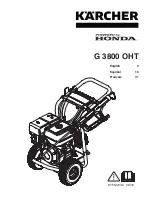
areas where the water hardness is soft it is
not necessary to use a water softener.
To know the water hardness in your area,
contact your local water authority.
Obey the instructions that you find on the
packaging of the products.
Equivalent scales measure the water hard-
ness:
• German degrees (°dH).
• French degrees (°TH).
• mmol/l (millimol for each litre - interna-
tional unit for the hardness of water).
• Clarke degrees.
Water hardness table
Level
Type
Water hardness
°dH
°T.H.
mmol/l
Clarke
1
soft
0-7
0-15
0-1.5
0-9
2
medium
8-14
16-25
1.6-2.5
10-16
3
hard
15-21
26-37
2.6-3.7
17-25
4
very hard
> 21
> 37
>3.7
>25
CARE AND CLEANING
Warning!
Disconnect the appliance from the mains
supply before you clean it.
Descaling
The water we use contains limescale. If it
becomes necessary, use a water softener
to remove limescales.
Use a special product made for washing
machines. Obey the instructions that you
find on the packaging of the manufacturer.
Do this separately from the laundry wash.
External cleaning
Clean the appliance only with soap and
warm water. Fully dry all the surfaces.
Caution!
Do not use alcohol, solvents
or chemical products.
Maintenance wash
With the low temperature programmes it is
possible that some detergent stays in the
drum. Make regularly a maintenance wash.
To do this:
• Empty the laundry from the drum.
• Set the hottest cotton wash programme
• Use a correct quantity of powder deter-
gent with biological properties.
After each wash, keep the door open for a
while to prevent mould and to let unpleas-
ant smells go out.
Door seal
Regularly examine the seal and remove all
objects from the inner part.
Drum
Regularly examine the drum to prevent
limescale and rust particles.
Only use special products to remove rust
particles from the drum.
To do this:
• Clean the drum with special product for
stainless steel.
17
Summary of Contents for PLD 14840
Page 1: ...User manual Washing Ma chine PLD 14840 ...
Page 29: ...29 ...
Page 30: ...30 ...
Page 31: ...31 ...
Page 32: ...132916840 A 092013 ...
















































